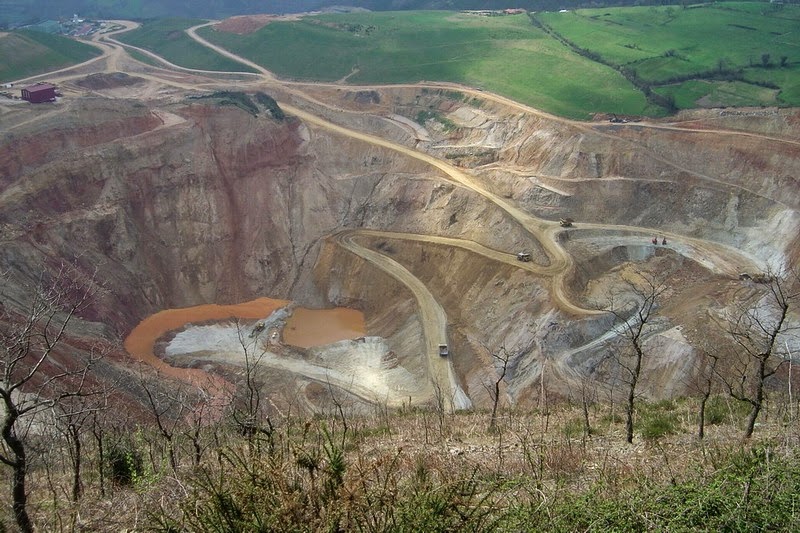Romans loved gold. And they knew for a long time they would find this in Spain. The Salave gold mine in the Asturian Tapia de Casariego has around 300,000 kilos of gold, making this place a dream for prospectors and a nightmare for the population.
Not only were the Romans crazy about gold, they were also brilliant at finding and exploiting gold mines. Asturias is home to 487 of them. Las Médulas near the town of Ponferrada in León is perhaps the most famous Roman gold mine. It is now a UNESCO World Heritage Site.
Salave in Asturias probably contains the most gold in Europe
Yet there is another place the Romans worked hard to extract gold from. This mine is called Salave and is located in the municipality of Tapia de Casariego, on the coast of Cantabria. This seemingly idyllic village hides perhaps the largest gold mine in Europe; with an estimated 300,000 kilos of gold. Everyone in the mining world wishes this place was within reach. However, its proximity is a nightmare for the inhabitants of the Spanish village.
Brilliant – and fierce – extraction method by Romans
To get their hands on the gold, the Romans used a genius and devastating method – ruina montium (destruction of mountains). This mining method changed the landscape in question forever. In this way, 4 million cubic meters of earth were moved in the mine of Salave. This is perhaps less than the nearly 100 million cubic meters that the Romans moved at Las Médulas, yet it was enough to extract almost 7,000 kilos of gold.
Salave not exploited since Roman period
This area of the Asturias has a fairly rare feature. The bottom is made of granite, which protects the gold that lies deeper, therefore making this area more difficult to exploit. Furthermore, the mining law of 1825 no longer allows its exploited in such a way.
Since the 1960s, several initiators have drilled in the Tapia area but without result. In 2010, the company AsturGold started to get the mine working again. Although it has been said many times in the past 2,000 years, this company also believes it has never been as close to gold as the Romans.
Mining Asturias highly controversial
However, this issue is highly controversial. The mining has created hundreds of jobs in western Asturias and the province of Lugo. Nevertheless, environmental problems have been piling up ever since. Although mining is controlled in many ways, it continues to have a negative impact on the environment.
Residents of Asturias fear the company will succeed in getting the mine working again; and the consequences for the environment and the health of local residents. Some already assume if the exploitation is resumed, it will only be a matter of time before they have to leave their homes.
Despite adversity, prospectors cannot forget the Asturian mine
The company has proposed conditions to the Asturias regional government that strive for maximum respect for the environment. However, these have not yet been approved; and the pandemic has put all plans for the mine of Salave on hold.
Yet, it is still more than clear Salave is too attractive for mining to give up. The estimated 300,000 kilos of gold would yield more than €14.7million at the current price.


